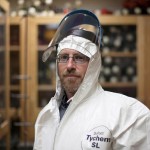 I rarely write about crime fiction, since most of it seems completely orthogonal to the phenomenon that I’ve spent a career studying. Quentin Tarantino, Martin Scorcese, and the Brothers Coen are surely gifted filmmakers, but the hyperviolent worlds they create are pure fantasy — bearing about the same relation to the lived reality of crime as the average pornographic film bears to the lived reality of human sexuality. By confronting compelling characters with horrible moral choices, however, the best crime fiction can actually tell us something meaningful about human frailty, morality, and justice.
I rarely write about crime fiction, since most of it seems completely orthogonal to the phenomenon that I’ve spent a career studying. Quentin Tarantino, Martin Scorcese, and the Brothers Coen are surely gifted filmmakers, but the hyperviolent worlds they create are pure fantasy — bearing about the same relation to the lived reality of crime as the average pornographic film bears to the lived reality of human sexuality. By confronting compelling characters with horrible moral choices, however, the best crime fiction can actually tell us something meaningful about human frailty, morality, and justice.
I think Breaking Bad succeeds on this level, though I still switch over to the Hallmark channel or America’s Cutest Pets during its ugliest moments. I have many questions about the show, but Joe Kleinschmidt’s Minnesota Daily article answered one of the biggies. Forget about the crime, how’s the chemistry? Mr. Kleinschmidt put the question to Bill Tolman, the straight-up brilliant Minnesota chemistry professor and department chair pictured above. I was surprised to learn that the show’s etch-a-sketch explosive might’ve actually worked and that the makeshift battery that Walter White constructs in the desert might indeed have started his stranded mobile meth lab:
Walt uses the RV’s brake pad for its mercuric oxide and graphite. This serves as the cathode, which gains electrons. He also gathers spare metallic parts, nuts and bolts, for the zinc they contain. The zinc serves as the anode, where the other electrochemical half-reaction occurs (loss of electrons). With potassium hydroxide solution leftover from their meth-making process serving as electrolyte (to conduct charge), Walt uses a sponge to separate the anode and cathode. Finally, he connects the cell components with copper wire and connects the parallel batteries to the RV’s jumper cables. “The only question now is, will this supply enough current?” Walt says in the episode, posing the only hang-up in his plan. “When he said that, I thought, ‘Yes! That’s the problem!’” Tolman said. But it worked. As Walt sets the batteries up and connects the wires, he creates a spark and the RV is revived. “It was a perfectly reasonable electrochemical cell using mercuric oxide and zinc,” Tolman said.
Of course, the show takes a few liberties — hastening a body’s dissolution in hydrofluoric acid, for example, and tossing around mercury fulminate like a bag of powdered sugar. All told, however, Breaking Bad does pretty well on the chemistry. As for its portrayal of drug markets, I’d have a few more quibbles…

Comments 5
James Franko — November 29, 2020
Faced with the choice of an organization that can help me write a essay in a format that is very difficult for me, I found the site https://typemyessays.com/critical-thinking. It was scary at first, because I had never worked with them yet, but everything happens for the first time. As it turned out, good people work there, ready to help for a very modest price.
Henry Wilsons — December 7, 2020
Hey. Good post! And what do you think about this translator? Is it good for texts?
Дмитрий — December 17, 2020
Hey. interesting post. There can be different opinion. Some people will say that cryptocurrency is a bubble. But many people invest in different coins and get good profit. Personally I have Bitcoins and earn on trading. Also I want to take part in rewards program from digitexfutures site. It is good possibility to get stable income.
elifflores — January 16, 2021
Hi there! Good post! If you decided to make the writing process easier and quicker then you can apply to the writing service that is named https://specialessays.com/write-my-discussion-board-post/ There you can get all the necessary information and save your time.
miladavis — June 17, 2021
Chemistry was my favorite subject in college. Moreover, I had very good grades in this subject. Now I work as a freelancer. More information on writing an essay can be found at the link https://top-papers.com/problem-solution-essay-writing-service/